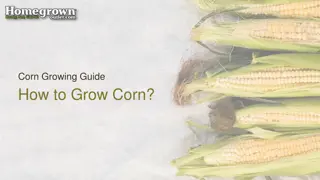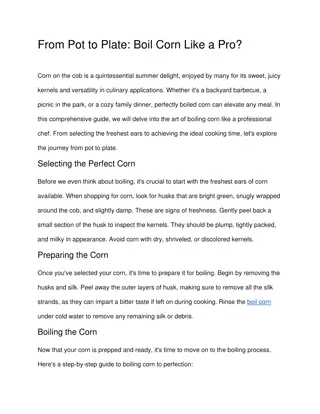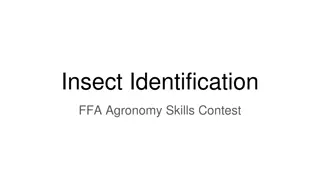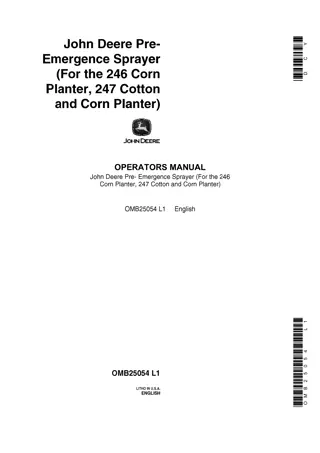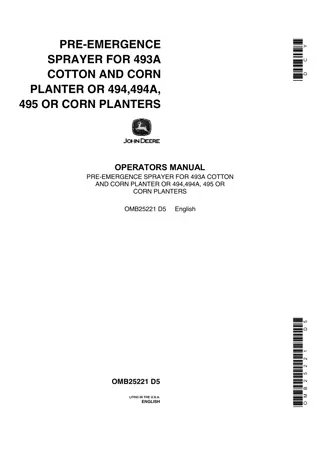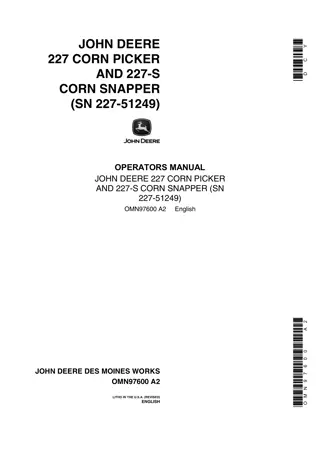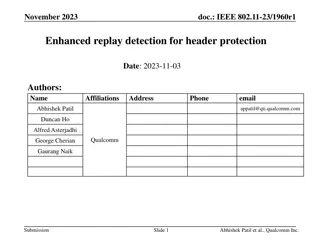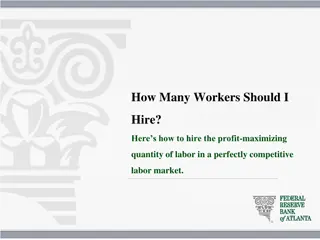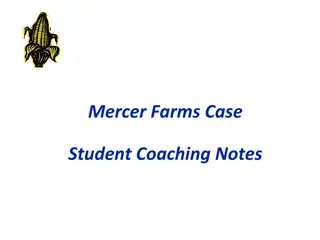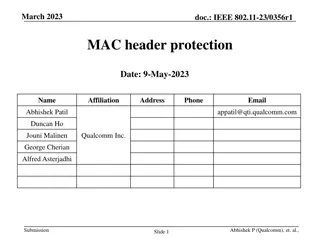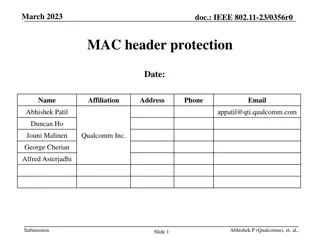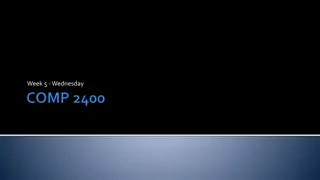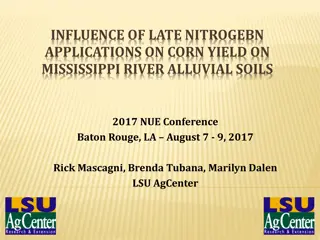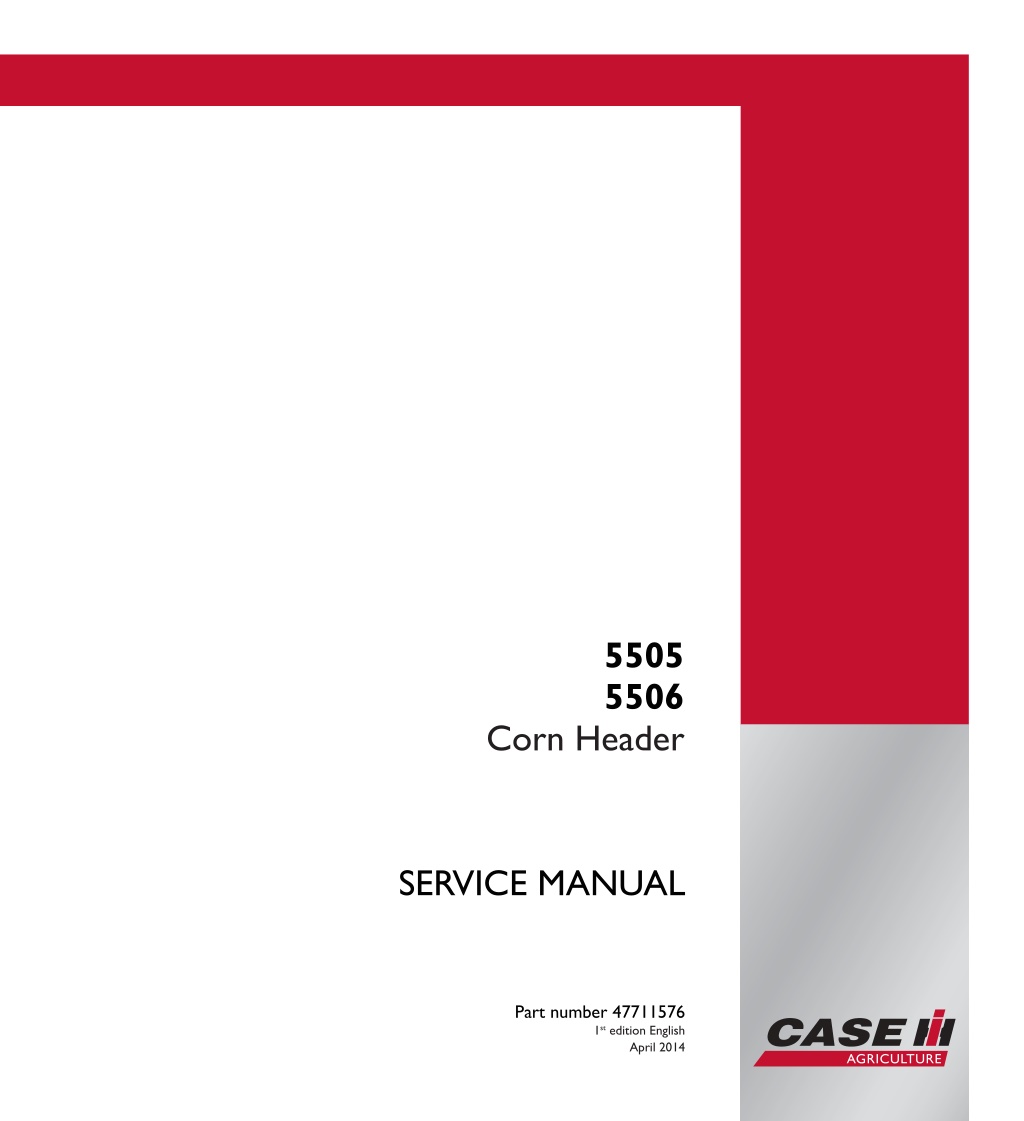
CASE IH 5505 5506 Corn Header Service Repair Manual Instant Download (Part Number 47711576)
Please open the website below to get the complete manualnn//
Download Presentation

Please find below an Image/Link to download the presentation.
The content on the website is provided AS IS for your information and personal use only. It may not be sold, licensed, or shared on other websites without obtaining consent from the author. Download presentation by click this link. If you encounter any issues during the download, it is possible that the publisher has removed the file from their server.
E N D
Presentation Transcript
SERVICE MANUAL 5505 5506 5505 5506 Corn Header Corn Header SERVICE MANUAL Part number 47711576 Part number 47711576 1st edition English April 2014
SERVICE MANUAL 5505 5506 47711576 30/04/2014 EN
Contents INTRODUCTION Main gearbox and drive............................................................... 14 [14.100] Main gearbox and drive ............................................................ 14.1 Attachments/Headers.................................................................. 58 [58.120] Attachment/Header feed auger .................................................... 58.1 [58.220] Corn header structure.............................................................. 58.2 [58.230] Stalk choppers ..................................................................... 58.3 [58.408] Row-independent header guards and protection .................................. 58.4 [58.414] Row-independent header gearboxes .............................................. 58.5 [58.420] Row-independent header frame ................................................... 58.6 [58.900] Belt feeding ........................................................................ 58.7 Product feeding.......................................................................... 60 [60.122] Length-of-cut gearbox.............................................................. 60.1 47711576 30/04/2014
https://www.ebooklibonline.com Hello dear friend! Thank you very much for reading. Enter the link into your browser. The full manual is available for immediate download. https://www.ebooklibonline.com
INTRODUCTION 47711576 30/04/2014 1
Contents INTRODUCTION Personal safety .................................................................................3 Safety rules - Ecology and the environment ....................................................8 Safety rules .....................................................................................9 Safety signs ................................................................................... 10 Basic instructions - Important notice regarding equipment servicing ......................... 20 Basic instructions - Shop and assembly ...................................................... 21 Torque - Minimum Hardware Tightening Torques for Normal Assembly Applications ........ 23 Basic instructions - Chain Wear Tables - Roller Chains ...................................... 27 Attachments/Headers - Basic instructions .................................................... 29 General specification ......................................................................... 31 Product identification .......................................................................... 33 47711576 30/04/2014 2
INTRODUCTION Personal safety General safety rules Use caution when you operate the machine on slopes. Raised equipment, full tanks and other loads will change the center of gravity of the machine. The machine can tip or roll over when near ditches and embankments or uneven surfaces. Never operate the machine under the influence of alcohol or drugs, or while you are otherwise impaired. Hydraulic oil or diesel fuel leaking under pressure can penetrate the skin, causing serious injury or infection. DO NOT use your hand to check for leaks. Use a piece of cardboard or paper. Stop the engine, remove the key, and relieve the pressure before you connect or disconnect fluid lines. Make sure that all components are in good condition. Tighten all connections before you start the engine or pres- surize the system. If hydraulic fluid or diesel fuel penetrates the skin, seek medical attention immediately. Continuous long term contact with hydraulic fluid may cause skin cancer. Avoid long term contact and wash the skin promptly with soap and water. Keep clear of moving parts. Loose clothing, jewelry, watches, long hair, and other loose or hanging items can become entangled in moving parts. Wear protective equipment when appropriate. DO NOT attempt to remove material from any part of the machine while it is being operated or while components are in motion. Make sure that all guards and shields are in good condition and properly installed before you operate the machine. Never operate the machine with shields removed. Always close access doors or panels before you operate the ma- chine. Dirty or slippery steps, ladders, walkways, and platforms can cause falls. Make sure these surfaces remain clean and clear of debris. A person or pet within the operating area of a machine can be struck or crushed by the machine or its equipment. DO NOT allow anyone to enter the work area. Raised equipment and/or loads can fall unexpectedly and crush persons underneath. Never allow anyone to enter the area underneath raised equipment during operation. 47711576 30/04/2014 3
INTRODUCTION Before you leave the machine: 1. Park the machine on a firm, level surface. 2. Put all controls in neutral or park lock position. 3. Engage the parking brake. Use wheel chocks if required. 4. Lower all hydraulic equipment Implements, header, etc. 5. Turn off the engine and remove the key. When, due to exceptional circumstances, you would decide to keep the engine running after you leave the operator s station, then you must follow these precautions: 1. Bring the engine to low idle speed. 2. Disengage all drive systems. WARNING Some components may continue to run down after disengaging drive systems. Make sure all drive systems are fully disengaged. Failure to comply could result in death or serious injury. 3. W0113A Shift the transmission into neutral. 4. Apply the parking brake. General maintenance safety Keep the area used for servicing the machine clean and dry. Clean up spilled fluids. Service the machine on a firm, level surface. Install guards and shields after you service the machine. Close all access doors and install all panels after servicing the machine. Do not attempt to clean, lubricate, clear obstructions, or make adjustments to the machine while it is in motion or while the engine is running. Always make sure that working area is clear of tools, parts, other persons and pets before you start operating the machine. Unsupported hydraulic cylinders can lose pressure and drop the equipment, causing a crushing hazard. Do not leave equipment in a raised position while parked or during service, unless the equipment is securely supported. Jack or lift the machine only at jack or lift points indicated in this manual. Stop the engine, remove the key, and relieve pressure before you connect or disconnect fluid lines. Stop the engine and remove the key before you connect or disconnect electrical connections. Replace damaged or worn tubes, hoses, electrical wiring, etc. The engine, transmission, exhaust components, and hydraulic lines may become hot during operation. Take care when you service such components. Allow surfaces to cool before you handle or disconnect hot components. Wear protective equipment when appropriate. When welding, follow the instructions in the manual. Always disconnect the battery before you weld on the machine. Always wash your hands after you handle battery components. Driving on public roads and general transportation safety Comply with local laws and regulations. Use appropriate lighting to meet local regulations. 47711576 30/04/2014 4
INTRODUCTION Make sure that the SMV emblem is visible. Use safety chains for trailed equipment when safety chains are provided with machine or equipment. Lift implements and attachments high enough above ground to prevent accidental contact with road. When you transport equipment or a machine on a transport trailer, make sure that it is properly secured. Be sure the SMV on the equipment or machine is covered while being transported on a trailer. Be aware of overhead structures or power lines and make sure that the machine and/or attachments can pass safely under. Travel speed should be such that you maintain complete control and machine stability at all times. Slow down and signal before turning. Pull over to allow faster traffic to pass. Follow correct towing procedure for equipment with or without brakes. Fire and explosion prevention Fuel or oil that is leaked or spilled on hot surfaces or electrical components can cause a fire. Crop materials, trash, debris, bird nests, or flammable material can ignite on hot surfaces. Always have a fire extinguisher on or near the machine. Make sure that the fire extinguisher(s) is maintained and serviced according to the manufacturer s instructions. At least once each day and at the end of the day, remove all trash and debris from the machine especially around hot components such as the engine, transmission, exhaust, battery, etc. More frequent cleaning of your machine may be necessary depending on the operating environment and conditions. At least once each day, remove debris accumulation around moving components such as bearings, pulleys, belts, gears, cleaning fans, etc. More frequent cleaning of your machine may be necessary depending on the operating environment and conditions. Inspect the electrical system for loose connections and frayed insulation. Repair or replace loose or damaged parts. Do not store oily rags or other flammable material on the machine. Do not weld or flame cut any items that contain flammable material. Clean items thoroughly with non-flammable solvents before welding or flame-cutting. Do not expose the machine to flames, burning brush, or explosives. Promptly investigate any unusual smells or odors that may occur during operation of the machine. Reflectors and warning lights You must use flashing amber warning lights when you operate equipment on public roads. 47711576 30/04/2014 5
INTRODUCTION Personal Protective Equipment (PPE) Wear Personal Protective Equipment (PPE) such as hard hat, eye protection, heavy gloves, hearing protection, pro- tective clothing, etc. Do Not Operate tag Before you start servicing the machine, attach a Do Not Operate warning tag to the machine in an area that will be visible. Hazardous chemicals If you are exposed to or come in contact with hazardous chemicals you can be seriously injured. The fluids, lubricants, paints, adhesives, coolant, etc. required for the function of your machine can be hazardous. They may be attractive and harmful to domestic animals as well as humans. Material Safety Data Sheets (MSDS) provide information about the chemical substances within a product, safe han- dling and storage procedures, first aid measures, and procedures to take in the event of a spill or accidental release. MSDS are available from your dealer. Before you service your machine check the MSDS for each lubricant, fluid, etc. used in this machine. This information indicates the associated risks and will help you service the machine safely. Follow the information in the MSDS, and on manufacturer containers, as well as the information in this manual, when you service the machine. Dispose of all fluids, filters, and containers in an environmentally safe manner according to local laws and regulations. Check with local environmental and recycling centers or your dealer for correct disposal information. Store fluids and filters in accordance with local laws and regulations. Use only appropriate containers for the storage of chemicals or petrochemical substances. Keep out of reach or children or other unauthorized persons. Applied chemicals require additional precautions. Obtain complete information from the manufacturer or distributor of the chemicals before you use them. Utility safety Make sure that the machine has sufficient clearance to pass in all directions. Pay special attention to overhead power lines and hanging obstacles. High voltage lines may require significant clearance for safety. Contact local authorities or utilities to obtain safe clearance distances from high voltage power lines. Retract raised or extended components, if necessary. Remove or lower radio antennas or other accessories. Should a contact between the machine and an electric power source occur, the following precautions must be taken: Stop the machine movement immediately. Apply the parking brake, stop the engine, and remove the key. Check if you can safely leave the cab or your actual position without contact with electrical wires. If not, stay in your position and call for help. If you can leave your position without touching lines, jump clear of the machine to make sure that you do not make contact with the ground and the machine at the same time. Do not permit anyone to touch the machine until power has been shut off to the power lines. Electrical storm safety Do not operate machine during an electrical storm. If you are on the ground during an electrical storm, stay away from machinery and equipment. Seek shelter in a permanent, protected structure. If an electrical storm should strike during operation, remain in the cab. Do not leave the cab or operator s platform. Do not make contact with the ground or objects outside the machine. 47711576 30/04/2014 6
INTRODUCTION Working at heights When the normal use and maintenance of the machine requires you to work at heights: Correctly use installed steps, ladders, and railings. Never use ladders, steps, or railings while the machine is moving. Do not stand on surfaces that are not designated as steps or platforms. Do not use the machine as a lift, ladder, or platform for working at heights. 47711576 30/04/2014 7
INTRODUCTION Safety rules - Ecology and the environment Soil, air, and water are vital factors of agriculture and life in general. When legislation does not yet rule the treatment of some of the substances required by advanced technology, sound judgment should govern the use and disposal of products of a chemical and petrochemical nature. NOTE: The following are recommendations that may be of assistance: Become acquainted with and ensure that you understand the relative legislation applicable to your country. Where no legislation exists, obtain information from suppliers of oils, filters, batteries, fuels, antifreeze, cleaning agents, etc., with regard to their effect on man and nature and how to safely store, use, and dispose of these substances. Agricultural consultants will, in many cases, be able to help you as well. Helpful hints Avoid filling tanks using cans or inappropriate pressurized fuel delivery systems that may cause considerable spillage. In general, avoid skin contact with all fuels, oils, acids, solvents, etc. Most of them contain substances that may be harmful to your health. Modern oils contain additives. Do not burn contaminated fuels and or waste oils in ordinary heating systems. Avoid spillage when draining off used engine coolant mixtures, engine, gearbox and hydraulic oils, brake fluids, etc. Do not mix drained brake fluids or fuels with lubricants. Store them safely until they can be disposed of in a proper way to comply with local legislation and available resources. Modern coolant mixtures, i.e. antifreeze and other additives, should be replaced every two years. They should not be allowed to get into the soil, but should be collected and disposed of properly. Do not open the air-conditioning system yourself. It contains gases that should not be released into the atmosphere. Your CASE IH dealer or air conditioning specialist has a special extractor for this purpose and will have to recharge the system properly. Repair any leaks or defects in the engine cooling or hydraulic system immediately. Do not increase the pressure in a pressurized circuit as this may lead to a component failure. Protect hoses during welding as penetrating weld splatter may burn a hole or weaken them, allowing the loss of oils, coolant, etc. 47711576 30/04/2014 8
INTRODUCTION Safety rules Personal safety This is the safety alert symbol. It is used to alert you to potential personal injury hazards. Obey all safety messages that follow this symbol to avoid possible death or injury. Throughout this manual you will find the signal words DANGER, WARNING, and CAUTION followed by special in- structions. These precautions are intended for the personal safety of you and those working with you. Read and understand all the safety messages in this manual before you operate or service the machine. DANGER indicates a hazardous situation that, if not avoided, will result in death or serious injury. WARNING indicates a hazardous situation that, if not avoided, could result in death or serious injury. CAUTION indicates a hazardous situation that, if not avoided, could result in minor or moderate injury. FAILURE TO FOLLOW DANGER, WARNING, AND CAUTION MESSAGES COULD RESULT IN DEATH OR SERIOUS INJURY. Machine safety NOTICE: Notice indicates a situation that, if not avoided, could result in machine or property damage. Throughout this manual you will find the signal word Notice followed by special instructions to prevent machine or property damage. The word Notice is used to address practices not related to personal safety. Information NOTE: Note indicates additional information that clarifies steps, procedures, or other information in this manual. Throughout this manual you will find the word Note followed by additional information about a step, procedure, or other information in the manual. The word Note is not intended to address personal safety or property damage. 47711576 30/04/2014 9
INTRODUCTION Safety signs Double Drive Signs shown are for a corn header equipped with stalk choppers and a double drive system. For corn headers with a single left-hand drive system, certain drive related safety decals will be installed on the left-hand side of the header only. The following safety signs are placed on your machine as a guide for your safety and for those working with you. Walk around the machine and note the content and location of these safety signs before operating your machine. Keep safety signs clean and legible. Clean safety signs with a soft cloth, water, and a gentle detergent. Do not use solvent, gasoline, or other harsh chemicals. Solvents, gasoline, and other harsh chemicals may damage or remove safety signs. Replace all safety signs that are damaged, missing, painted over, or illegible. If a safety sign is on a part that is replaced, make sure the safety sign is installed on the new part. See your dealer for replacement safety signs. Safety signs that display the Read Operator s Manual symbol are intended to direct the operator to the operator s manual for further information regarding maintenance, adjustments, or procedures for particular areas of the machine. When a safety sign displays this symbol, refer to the appropriate page of the operator s manual. 1 NHIL14GH00108FC Back 47711576 30/04/2014 10
INTRODUCTION 2 NHIL14GH00109FA Front 3 NHIL14GH00095AA Left 47711576 30/04/2014 11
INTRODUCTION WARNING Crush Hazard. Engage safety latch before working under machine. Failure to comply could result in death or serious injury. Quantity: 4 144380A1 4 84004735 (1) Left-hand side of front panel. 5 NHIL13GH00790AA (1) Right-hand side of front panel. 6 NHIL13GH00753AA (1) Left-hand side of back panel. 7 NHIL14GH00110AB 47711576 30/04/2014 12
Suggest: For more complete manuals. Please go to the home page. https://www.ebooklibonline.com If the above button click is invalid. Please download this document first, and then click the above link to download the complete manual. Thank you so much for reading
INTRODUCTION (1) Right-hand side of back panel. 8 NHIL14GH00111AB WARNING Row unit entanglement hazard. Operator should stay clear of the corn head when running. Stop the corn head, shut off the engine, and remove the keys before attempting to unclog the corn head row unit. Failure to comply could result in death or serious injury. Quantity: 2 84400502 9 84400502 (1) Left-hand side of front panel. 10 NHIL13GH00790AA (2) Right-hand side of front panel. 11 NHIL13GH00753AA 47711576 30/04/2014 13
INTRODUCTION WARNING Overhead lifting hazard. Lift and handle heavy components using lifting equipment with appropriate lifting capacity. Ensure that units are supported by suitable slings and hooks. Ensure that no persons or pets are in the vicinity of the load being lifted Failure to comply could result in death or serious injury. Quantity: 2 84593097 12 84593097 (3) On left-hand side, rear of top beam. 13 NHIL14GH00110AB (3) On right-hand side, rear of top beam. 14 NHIL14GH00111AB 47711576 30/04/2014 14
https://www.ebooklibonline.com Hello dear friend! Thank you very much for reading. Enter the link into your browser. The full manual is available for immediate download. https://www.ebooklibonline.com



